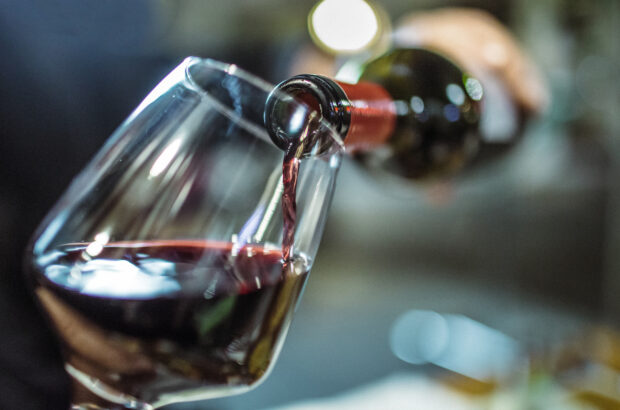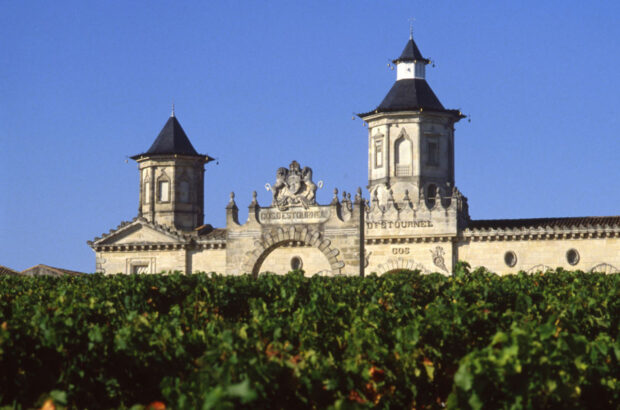Chardonnays should mature gracefully to a ripe old age. But many, less than 15 years old, are aged prematurely in such a random manner that experts cannot pinpoint the cause. Stephen Brook delves further into the issue.
In the early 2000s it became apparent that something was going wrong with prestigious white Burgundies of the 1990s.
In essence, the problem was one of premature but random oxidation. Wines that should, from experience, have been long-lived, growing in complexity as they aged in bottle, were tiring before they even reached middle age.
Renowned French taster Michel Bettane noticed the problem with the 1996 vintage. One explanation he gave, after consulting various oenologists, was that the wines had been too heavily manipulated to ensure they were ready for bottling before the new harvest began in 1997. But the problem was not confined to a single vintage. It persisted with all the succeeding vintages of the 1990s.
1997 and 1998 were never regarded as years with great ageing potential, but both 1996 and 1999 were well thought of – until drinkers began finding some bottles were oxidising.
To add to the confusion, some bottles in a case would be fine; others in clear decline. Jacques Seysses of Domaine Dujac, unofficial godfather to a whole generation of Burgundian winemakers, notes that the random nature of the problem is hard to explain.
‘You can have two awful bottles out of a case, and then two wonderful bottles. If it was just a question of corks, or sulphur dioxide levels, or solids in the must, then it would surely affect the whole batch and not just part of it.’
There seemed to be no single explanation. US Burgundy expert Allen Meadows (Burghound.com), discussed the problem repeatedly with producers and oenologists, and there was much speculation – but little agreement – on the cause.
The Burgundian growers’ association, the BIVB, put two oenologists to work on the issue, which was clearly damaging the reputation of white Burgundy as a whole. It became evident that some estates were more affected than others, while some seemed immune. (A few Burgundian winemakers wryly note that other regions, such as Bordeaux and Alsace, have encountered similar problems with their white wines, but they rarely come up for debate.)
Perhaps poor corks were to blame? An expansion of cork production to meet growing demand may have led to a decline in quality, and the use of treatments such as peroxide or silicone coatings during the production process almost certainly contributed to the problem.
Seysses is convinced corks played a significant role. ‘They were treated with bleach and hydrogen peroxide, which certainly gave them an attractive pale appearance, but those chemicals were known oxidants!’
Yet researchers decided that while corks may have been partly to blame for the problem, it was impossible to attribute the Excessive use of the antioxidant sulphur dioxide (SO2) was increasingly discouraged in the 1990s, as it can dampen aromas and flavours and give some drinkers headaches.
As a consequence, it is likely that some wines were not bottled with enough S02 to keep oxidation at bay. Moreover, during the 90s, bâtonnage, or lees-stirring, was all the rage. Burgundian winemakers had always practised bâtonnage, but in the 1990s it may have been taken to extemes, to give the wines more fat and body than that with which nature had endowed them.
Excessive lees-stirring can also have an oxidative effect. Meursault producer Patrick Javillier came up with a theory. In the 1990s, many growers were switching from rough and ready horizontal presses to more sophisticated bladder presses, and generally opting for less exposure to oxygen, thus a more reductive style of winemaking.
The aim was to give cleaner, fresher aromas and flavours. For all their drawbacks, previous technologies such as the basket press and the horizontal press, gave the must early exposure to oxygen which, paradoxically, protected the wine from subsequent oxidation – just as childhood vaccinations protect against diseases in later life.
So Javillier, who attributes the problem to a mix of poor corks, low sulphur dioxide, and the use of pneumatic presses, has stuck with his old horizontal presses.
‘That way the wine gets the right amount of exposure to oxygen, although I will lose some primary aromas. A horizontal press also gives more lees in the juice, which can protect the wine.
Remember that in 1947, a very hot year with very low acidity, the whites aged well, because no one racked the wine off the lees. The lees took the place of acidity and protected the wines from oxidation.’
Another Meursault producer, Vincent Girardin, agrees with Javillier. ‘Modern presses give juice that is extremely clean, but it’s essential to obtain dry extract from the skins which will help protect the wine.’
Like Jean-François Coche of Coche-Dury, he has recently bought a horizontal press, in search of a return to juice that is less than squeaky clean. Not that Girardin believes that presses alone are
responsible for the problem.
‘I am sure there are other factors. The search for super-ripe grapes can result in wines that age rapidly, and warm cellars encourage rapid malolactic fermentations, which may also promote oxidation.’
All these theories are plausible, although it is difficult for a non-scientist to know how much weight to give to each. More important for us consumers is the question of whether premature oxidation is still a problem with white Burgundy.
The consensus seems to be that the problem has, if not vanished, become far less pronounced, although one would expect wine producers and merchants to put the best spin on the issue. Franck Grux, long-term winemaker for négociant Olivier Leflaive, says:
‘Serious winemakers have made changes to their farming and winemaking since the late 1990s. Yields are lower and we pick for acidity as well as sugar. We’re cutting back on new oak and using lighter toasts, with less bâtonnage than in the past. I’ll adjust S02 every two months, so it is more under control.
Many of us have also gone back to using wooden bungs in the barrels rather than silicon bungs, and this allows more carbon dioxide to remain in the wine as it ages.’
Caroline L’Estimé of Domaine Jean-Noël Gagnard in Chassagne- Montrachet doubts that bâtonnage is a culprit, as she never practised it. Today she takes the precaution of analysing the wine before bottling to ensure enough S02 has been added to protect it.
Jacques Lardière, who has 40 years’ experience as winemaker at Jadot, believes Javillier’s analysis is broadly correct, but adds that some treatments in the vineyard may also have played a role, a view shared by Bettane.
‘Everything is possible!’ declaims Lardière. ‘But remember it wasn’t just a problem with white Burgundy. Premature oxidation can also affect New Zealand Sauvignon Blanc, Champagne and other wines.’
But can consumers have confidence that the problem has been fixed? ‘We do everything possible to ensure the wines will have a long life, but we can never be entirely certain.
It does certainly seem that white wines are more fragile than in the past. But not long ago in Texas I ran a tasting of our whites from top sites from vintages in the late 1990s and the wines were impeccable.’
Burgundy specialist Jasper Morris MW of London merchant Berry Bros& Rudd also believes the problem has been cracked:
‘Burgundian winemakers lowered their sulphur levels in the 1990s. This was admirable, but they overdid it. Today they’ve got the balance about right. They also monitor more carefully the level of oxygen in the wine before S02 is added before bottling. And they retain more solids in the wine during fermentation, and those heavier lees are antioxidants.
I’m not saying you won’t find any oxidised bottles these days, but the problem is hugely reduced.’ Seysses agrees: ‘I remember Dominique Lafon being close to despair when two bottles of his 1999 Montrachet were opened and were clearly oxidised.’ (The one time I tasted this wine, in 2006, it too showed clear signs of premature oxidation.)
‘But certainly since 2001 there seem to be no further occurrences with the Lafon wines.’ An equally experienced and veteran British wine merchant took a rather different view after a tasting of the ravishing 2009 Rieslings from Germany.
‘I’m stocking my cellar with drier German Rieslings, rather than unreliable white Burgundies,’ he muttered. When I asked him whether there was still a problem with the latter, he retorted: ‘Definitely.’ But when I asked him whether I could quote him on the record, the response was equally swift: ‘Absolutely not.’
So it’s impossible to give a blanket assurance that all is now well. Certainly there is evidence to suggest that the problem is, if not ‘cured’, then far less prevalent than a decade ago.
Burgundian winemakers have altered many practices so as to minimise the risk, and highly reductive winemaking is no longer in vogue. Producers believe the problem has diminished since 2002, but if we consumers continue to find premature oxidation in more recent vintages, then our only recourse is to contact our wine merchant and press for either a refund or replacement.
Stephen Brook is a Decanter contributing editor and past winner of the Trophée des Grands Jours de Bourgogne.
Written by Stephen Brook







